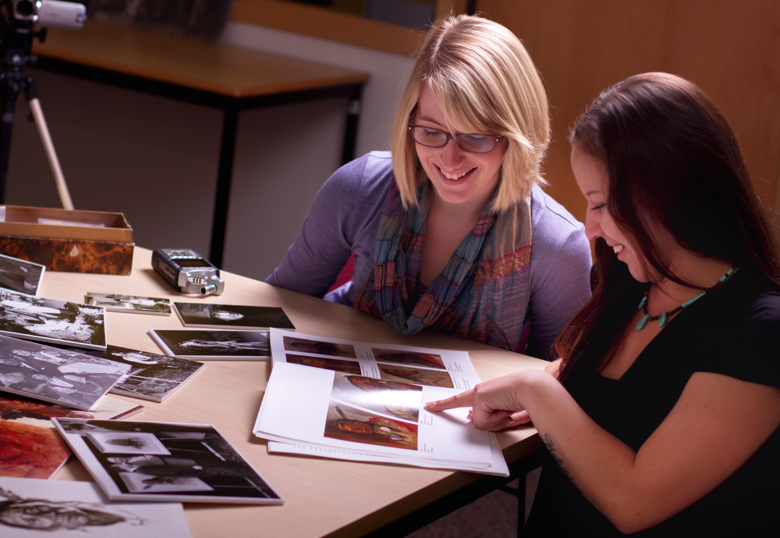The late English writer Rudyard Kipling once reflected, “If history were taught in the form of stories, it would never be forgotten.”
University of Lethbridge students Karissa Patton (BA ’13) and Maria Livingston would likely agree with that observation.

Last summer, Patton, who is now pursuing a master’s degree in history, and Livingston, a third-year Native American Studies student, worked together on the Oral History Project, a story-gathering initiative supported by the U of L Art Gallery, University Archives and Centre for Oral History and Tradition.
Today, Livingston continues to be involved in the project, which is aimed at helping people to enhance their understanding of artist Nicholas de Grandmaison (1892-1978) and his unique connections to First Nations communities. The University has a vast collection of de Grandmaison artwork and artifacts, including 67 original pastel portraits that were donated to the art gallery by BMO Financial Group earlier this year along with funding to support research related to the art gift.
A cultural icon of southern Alberta and one of the most important portraitists of First Nations people, de Grandmaison was a nomadic painter who often stayed with ranchers, farmers and Aboriginal families for several days at a time while he painted their portraits. His work not only documented the history of First Nations people in Canada, but was also unmatched in its ability to capture the unique personalities of those who sat for portraits.
With guidance from U of L archivist Mike Perry and Lisa Doolittle of the Department of Theatre and Dramatic Arts, Patton and Livingston contacted members of the Kainai, Siksika and Piikani First Nations, searching for – and interviewing – people who may have had contact either with de Grandmaison or any of the subjects featured in his paintings.
“Collecting individual narratives is important because people aren’t writing things down as much as they once did. Also, the stories that have been included in historical archives in the past have often just been those of famous people and politicians,” says Patton.
To ensure the full range of stories compiled in the oral history project are shared for years to come, Livingston is now working on an educational program and online resource for high school students and middle school students, respectively. The initiatives are a way of giving back to First Nations communities and youth, says Livingston, who is of Cree heritage.
“I’m thankful for the opportunity to work on this project,” she says. “Along with hearing great storytelling, I’ve learned more about First Nations culture and history, and that complements what I’ve been learning in school.”

